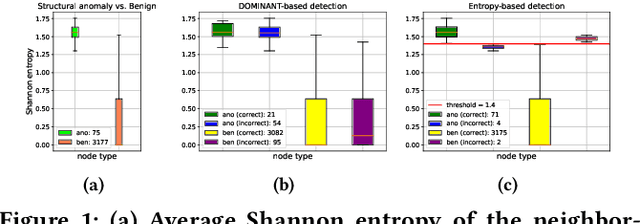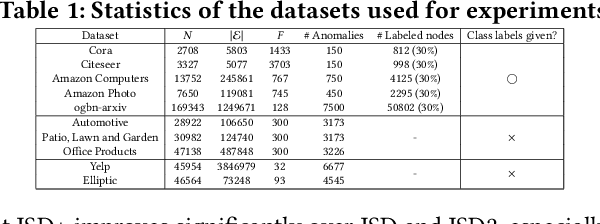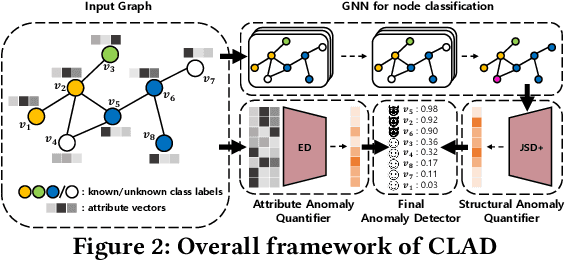Junghoon Kim
Puzzle: Scheduling Multiple Deep Learning Models on Mobile Device with Heterogeneous Processors
Aug 25, 2025Abstract:As deep learning models are increasingly deployed on mobile devices, modern mobile devices incorporate deep learning-specific accelerators to handle the growing computational demands, thus increasing their hardware heterogeneity. However, existing works on scheduling deep learning workloads across these processors have significant limitations: most studies focus on single-model scenarios rather than realistic multi-model scenarios, overlook performance variations from different hardware/software configurations, and struggle with accurate execution time estimation. To address these challenges, we propose a novel genetic algorithm-based methodology for scheduling multiple deep learning networks on heterogeneous processors by partitioning the networks into multiple subgraphs. Our approach incorporates three different types of chromosomes for partition/mapping/priority exploration, and leverages device-in-the-loop profiling and evaluation for accurate execution time estimation. Based on this methodology, our system, Puzzle, demonstrates superior performance in extensive evaluations with randomly generated scenarios involving nine state-of-the-art networks. The results demonstrate Puzzle can support 3.7 and 2.2 times higher request frequency on average compared to the two heuristic baselines, NPU Only and Best Mapping, respectively, while satisfying the equivalent level of real-time requirements.
Revisiting Fake News Detection: Towards Temporality-aware Evaluation by Leveraging Engagement Earliness
Nov 19, 2024Abstract:Social graph-based fake news detection aims to identify news articles containing false information by utilizing social contexts, e.g., user information, tweets and comments. However, conventional methods are evaluated under less realistic scenarios, where the model has access to future knowledge on article-related and context-related data during training. In this work, we newly formalize a more realistic evaluation scheme that mimics real-world scenarios, where the data is temporality-aware and the detection model can only be trained on data collected up to a certain point in time. We show that the discriminative capabilities of conventional methods decrease sharply under this new setting, and further propose DAWN, a method more applicable to such scenarios. Our empirical findings indicate that later engagements (e.g., consuming or reposting news) contribute more to noisy edges that link real news-fake news pairs in the social graph. Motivated by this, we utilize feature representations of engagement earliness to guide an edge weight estimator to suppress the weights of such noisy edges, thereby enhancing the detection performance of DAWN. Through extensive experiments, we demonstrate that DAWN outperforms existing fake news detection methods under real-world environments. The source code is available at https://github.com/LeeJunmo/DAWN.
ANOMIX: A Simple yet Effective Hard Negative Generation via Mixing for Graph Anomaly Detection
Oct 27, 2024



Abstract:Graph contrastive learning (GCL) generally requires a large number of samples. The one of the effective ways to reduce the number of samples is using hard negatives (e.g., Mixup). Designing mixing-based approach for GAD can be difficult due to imbalanced data or limited number of anomalies. We propose ANOMIX, a framework that consists of a novel graph mixing approach, ANOMIX-M, and multi-level contrasts for GAD. ANOMIX-M can effectively mix abnormality and normality from input graph to generate hard negatives, which are important for efficient GCL. ANOMIX is (a) A first mixing approach: firstly attempting graph mixing to generate hard negatives for GAD task and node- and subgraph-level contrasts to distinguish underlying anomalies. (b) Accurate: winning the highest AUC, up to 5.49% higher and 1.76% faster. (c) Effective: reducing the number of samples nearly 80% in GCL. Code is available at https://github.com/missinghwan/ANOMIX.
Beam Training in mmWave Vehicular Systems: Machine Learning for Decoupling Beam Selection
Apr 16, 2024Abstract:Codebook-based beam selection is one approach for configuring millimeter wave communication links. The overhead required to reconfigure the transmit and receive beam pair, though, increases in highly dynamic vehicular communication systems. Location information coupled with machine learning (ML) beam recommendation is one way to reduce the overhead of beam pair selection. In this paper, we develop ML-based location-aided approaches to decouple the beam selection between the user equipment (UE) and the base station (BS). We quantify the performance gaps due to decoupling beam selection and also disaggregating the UE's location information from the BS. Our simulation results show that decoupling beam selection with available location information at the BS performs comparable to joint beam pair selection at the BS. Moreover, decoupled beam selection without location closely approaches the performance of beam pair selection at the BS when sufficient beam pairs are swept.
Coding for Gaussian Two-Way Channels: Linear and Learning-Based Approaches
Dec 31, 2023Abstract:Although user cooperation cannot improve the capacity of Gaussian two-way channels (GTWCs) with independent noises, it can improve communication reliability. In this work, we aim to enhance and balance the communication reliability in GTWCs by minimizing the sum of error probabilities via joint design of encoders and decoders at the users. We first formulate general encoding/decoding functions, where the user cooperation is captured by the coupling of user encoding processes. The coupling effect renders the encoder/decoder design non-trivial, requiring effective decoding to capture this effect, as well as efficient power management at the encoders within power constraints. To address these challenges, we propose two different two-way coding strategies: linear coding and learning-based coding. For linear coding, we propose optimal linear decoding and discuss new insights on encoding regarding user cooperation to balance reliability. We then propose an efficient algorithm for joint encoder/decoder design. For learning-based coding, we introduce a novel recurrent neural network (RNN)-based coding architecture, where we propose interactive RNNs and a power control layer for encoding, and we incorporate bi-directional RNNs with an attention mechanism for decoding. Through simulations, we show that our two-way coding methodologies outperform conventional channel coding schemes (that do not utilize user cooperation) significantly in sum-error performance. We also demonstrate that our linear coding excels at high signal-to-noise ratios (SNRs), while our RNN-based coding performs best at low SNRs. We further investigate our two-way coding strategies in terms of power distribution, two-way coding benefit, different coding rates, and block-length gain.
Class Label-aware Graph Anomaly Detection
Aug 22, 2023



Abstract:Unsupervised GAD methods assume the lack of anomaly labels, i.e., whether a node is anomalous or not. One common observation we made from previous unsupervised methods is that they not only assume the absence of such anomaly labels, but also the absence of class labels (the class a node belongs to used in a general node classification task). In this work, we study the utility of class labels for unsupervised GAD; in particular, how they enhance the detection of structural anomalies. To this end, we propose a Class Label-aware Graph Anomaly Detection framework (CLAD) that utilizes a limited amount of labeled nodes to enhance the performance of unsupervised GAD. Extensive experiments on ten datasets demonstrate the superior performance of CLAD in comparison to existing unsupervised GAD methods, even in the absence of ground-truth class label information. The source code for CLAD is available at \url{https://github.com/jhkim611/CLAD}.
Deep Semi-supervised Anomaly Detection with Metapath-based Context Knowledge
Aug 21, 2023



Abstract:Graph anomaly detection has attracted considerable attention in recent years. This paper introduces a novel approach that leverages metapath-based semi-supervised learning, addressing the limitations of previous methods. We present a new framework, Metapath-based Semi-supervised Anomaly Detection (MSAD), incorporating GCN layers in both the encoder and decoder to efficiently propagate context information between abnormal and normal nodes. The design of metapath-based context information and a specifically crafted anomaly community enhance the process of learning differences in structures and attributes, both globally and locally. Through a comprehensive set of experiments conducted on seven real-world networks, this paper demonstrates the superiority of the MSAD method compared to state-of-the-art techniques. The promising results of this study pave the way for future investigations, focusing on the optimization and analysis of metapath patterns to further enhance the effectiveness of anomaly detection on attributed networks.
A Prototype Implementation of Rate Splitting Multiple Access using Software-Defined Radios
May 12, 2023Abstract:For interference-limited multi-user communications, many papers have demonstrated, in theory, the effectiveness of Rate Splitting Multiple Access (RSMA) in suppressing the interference and achieving better outcomes (w.r.t spectral efficiency, fairness etc.) than the conventional Space Division Multiple Access (SDMA) used in present-day standards. However, an experimental demonstration of RSMA's benefits is missing in the literature. In this paper, we address this gap by realizing an RSMA prototype using software-defined radios. For the two-user multiple-input single-output (MISO) scenario, we measure the throughput performance of SDMA and RSMA in nine different scenarios that vary in terms of the channel pathloss and spatial correlation experienced by the users. Emulating perfect channel state information (CSI) at the transmitter through unquantized CSI feedback, we observe that RSMA achieves a higher sum throughput (upto 57%) and more fairness than SDMA when the user channels have high spatial correlation. Similarly, emulating imperfect CSI through quantized feedback, RSMA - along with the above trend - also experiences a smaller sum throughput loss, relative to the unquantized case (37%, on average, as opposed to 44% for SDMA). These outcomes are consistent with theoretical predictions, and demonstrate the feasibility and potential of RSMA for next generation wireless networks (e.g., 6G).
Robust Non-Linear Feedback Coding via Power-Constrained Deep Learning
Apr 25, 2023



Abstract:The design of codes for feedback-enabled communications has been a long-standing open problem. Recent research on non-linear, deep learning-based coding schemes have demonstrated significant improvements in communication reliability over linear codes, but are still vulnerable to the presence of forward and feedback noise over the channel. In this paper, we develop a new family of non-linear feedback codes that greatly enhance robustness to channel noise. Our autoencoder-based architecture is designed to learn codes based on consecutive blocks of bits, which obtains de-noising advantages over bit-by-bit processing to help overcome the physical separation between the encoder and decoder over a noisy channel. Moreover, we develop a power control layer at the encoder to explicitly incorporate hardware constraints into the learning optimization, and prove that the resulting average power constraint is satisfied asymptotically. Numerical experiments demonstrate that our scheme outperforms state-of-the-art feedback codes by wide margins over practical forward and feedback noise regimes, and provide information-theoretic insights on the behavior of our non-linear codes. Moreover, we observe that, in a long blocklength regime, canonical error correction codes are still preferable to feedback codes when the feedback noise becomes high.
Learning-Based Adaptive User Selection in Millimeter Wave Hybrid Beamforming Systems
Feb 16, 2023Abstract:We consider a multi-user hybrid beamforming system, where the multiplexing gain is limited by the small number of RF chains employed at the base station (BS). To allow greater freedom for maximizing the multiplexing gain, it is better if the BS selects and serves some of the users at each scheduling instant, rather than serving all the users all the time. We adopt a two-timescale protocol that takes into account the mmWave characteristics, where at the long timescale an analog beam is chosen for each user, and at the short timescale users are selected for transmission based on the chosen analog beams. The goal of the user selection is to maximize the traditional Proportional Fair (PF) metric. However, this maximization is non-trivial due to interference between the analog beams for selected users. We first define a greedy algorithm and a "top-k" algorithm, and then propose a machine learning (ML)-based user selection algorithm to provide an efficient trade-off between the PF performance and the computation time. Throughout simulations, we analyze the performance of the ML-based algorithms under various metrics, and show that it gives an efficient trade-off in performance as compared to counterparts.
 Add to Chrome
Add to Chrome Add to Firefox
Add to Firefox Add to Edge
Add to Edge